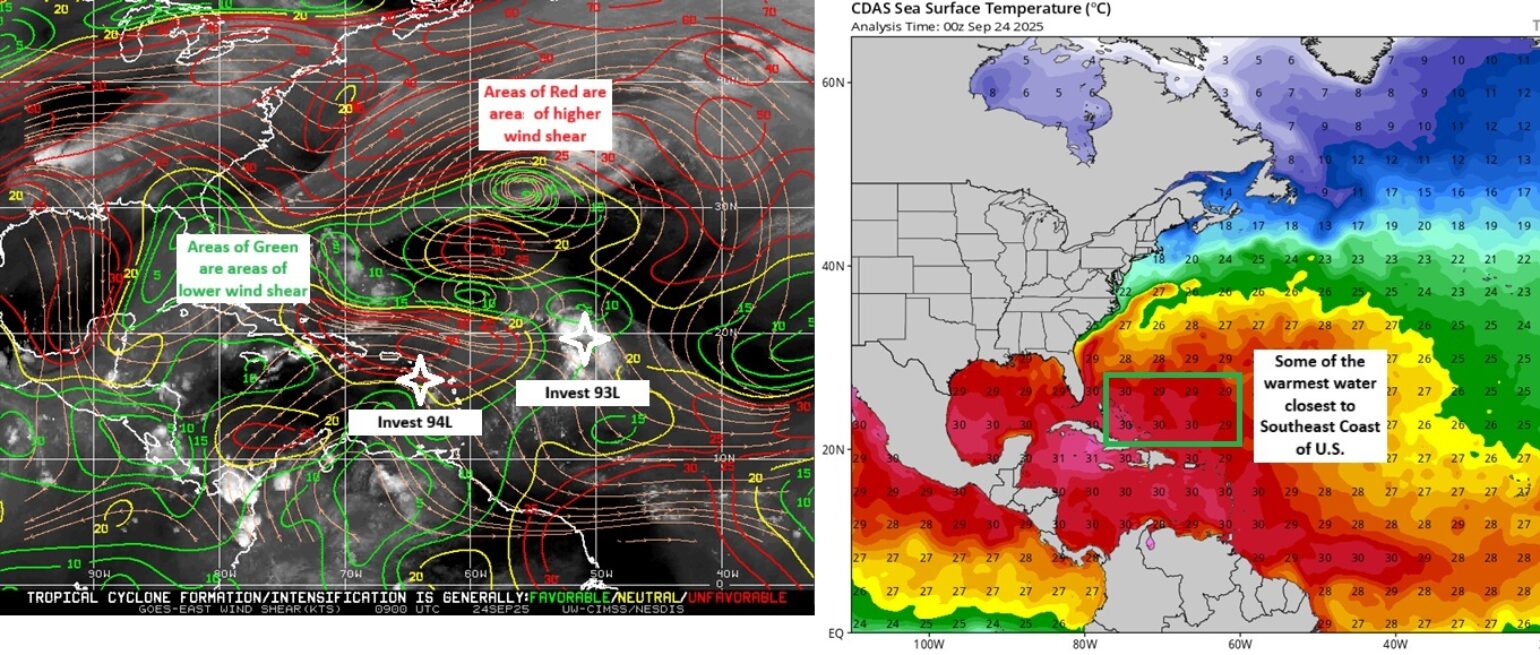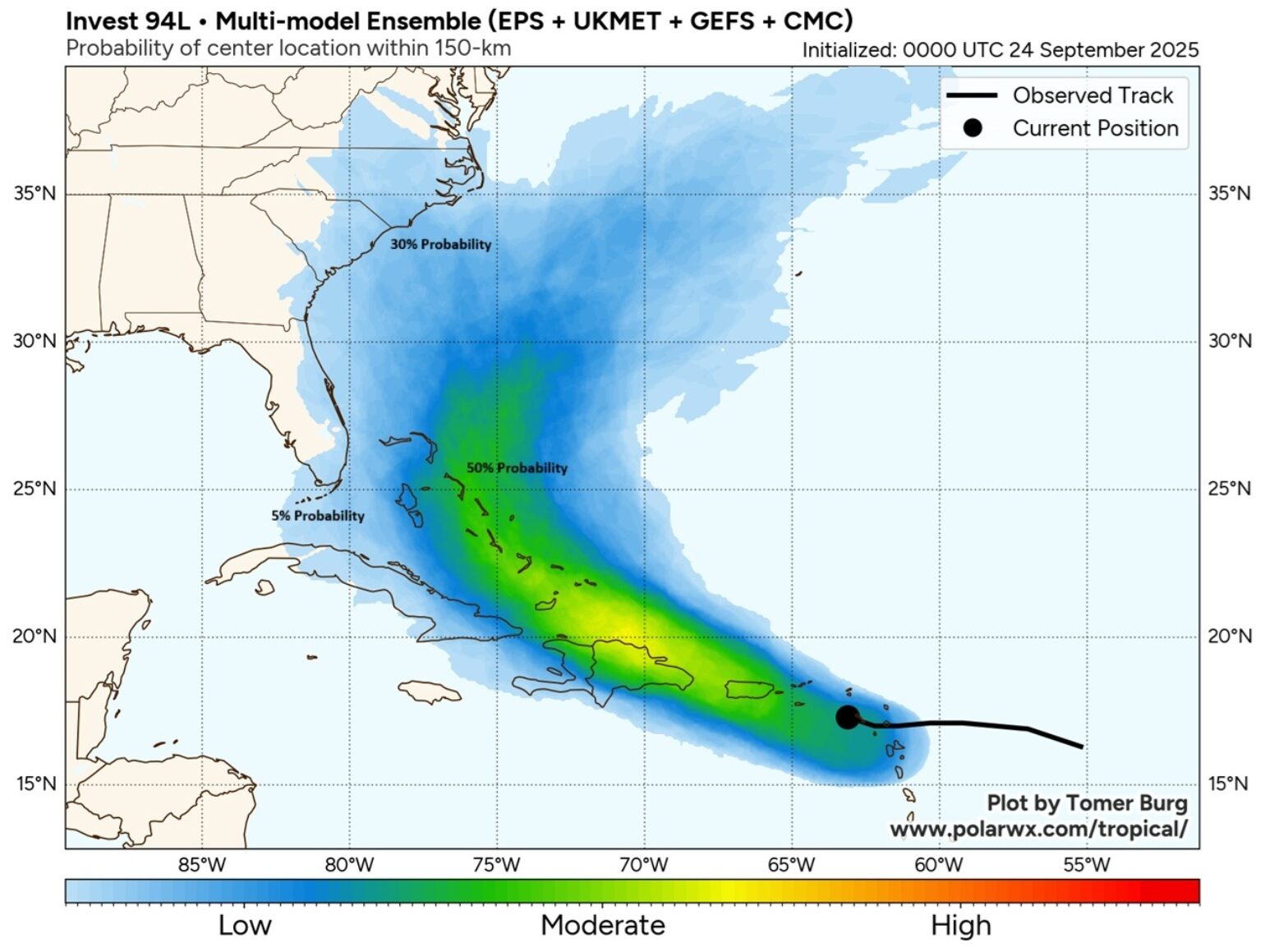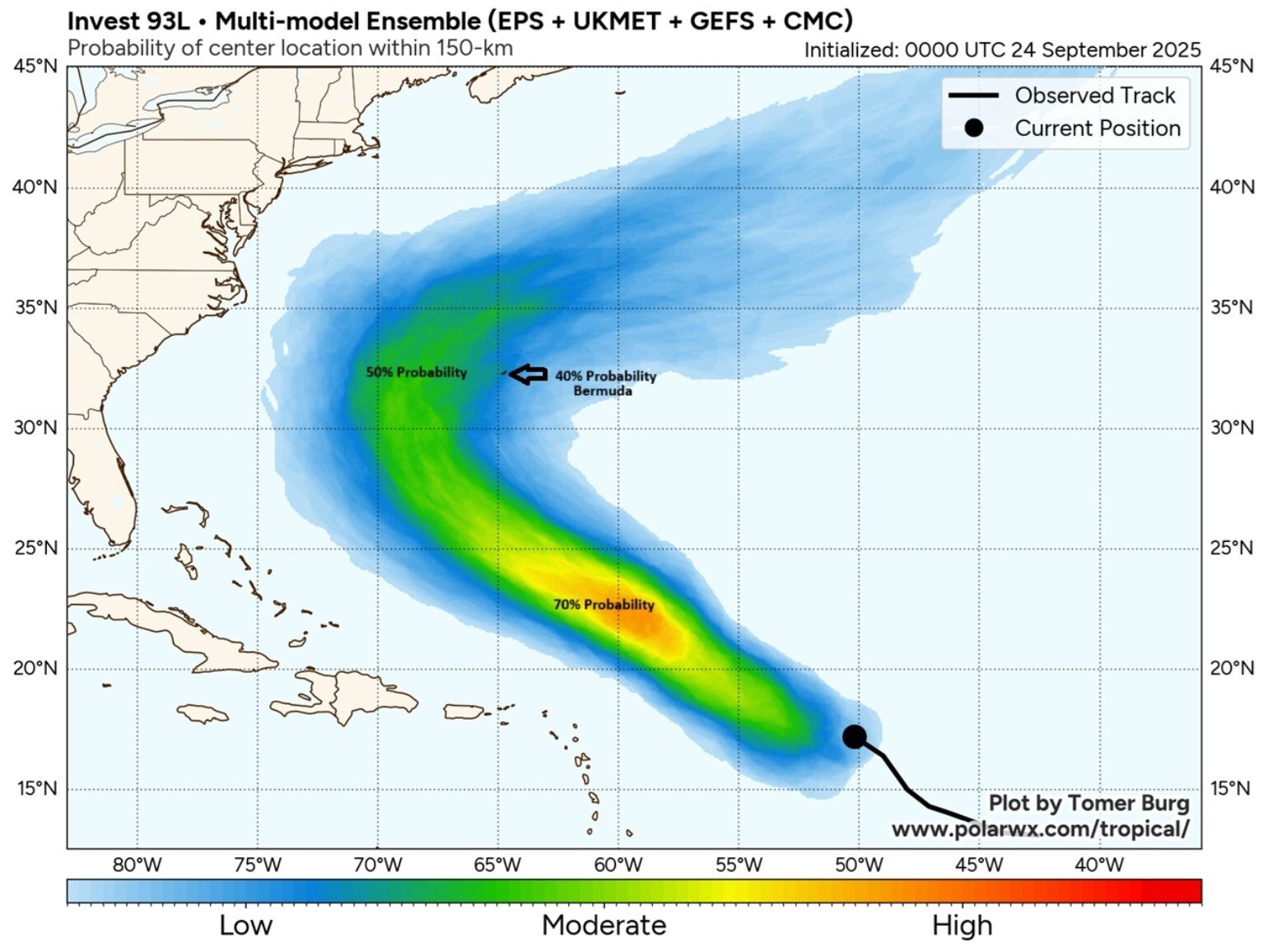First Landfalling Hurricane of 2025 Season on the Azores – Really?
Since our last official BMS Tropical Update posted on the peak of the season, September 10th, the Atlantic basin burst out of its slumber of having the least activity during the peak of the season since 1992. With Gabrielle forming on September 17th and becoming an impressive Category 4 hurricane East of Bermuda earlier this week, it means the only two hurricanes that have formed this year have been major hurricanes (category 3+ with winds of greater than or equal to 111 mph). The last time the first two hurricanes of the season became major hurricanes was back in 2011 with Irene and Katia. And with two major hurricanes forming year to date, it is the only metric that is not below normal year to date. The basin has still had only 7 named storms to date, when a typical season has 10 storms, and the Accumulated Cyclone Energy (ACE) index is currently 54.8, with a normal season having an ACE value of 86. Of course, most of the ACE was generated by major hurricanes Erin and Gabrielle.
Gabrielle is still a hurricane as of Wednesday morning (9/24) 1,360 mile East of the Azores Islands and what is maybe more unusual is that the first landfalling hurricane of the 2025 Atlantic hurricane season will likely come from Gabrielle as currently there are Hurricane Warnings in effect for all of the islands of the Azores as Gabrielle tracks closer to the islands and is expected to arrive late Thursday, bringing dangerous winds and heavy rain, with hurricane conditions likely Thursday night into Friday.
New Tropical Troubles to Watch
While Gabrielle isn’t out of the picture yet, more attention is currently likely focused on two areas that the National Hurricane Center (NHC) is monitoring for development over the next 7 days. Yesterday, these two systems were classified as invests by the NHC, which allows for more specific hurricane models to be focused on potential outcomes. Invests 94L, a tropical wave over the northeastern Caribbean Sea, and 93L (the farther east one) over the Central and Western Tropical Atlantic. They currently don’t look too impressive, but neither did Gabrielle before it developed into a major hurricane. Remember, our preseason forecast suggested that overall conditions will be more favourable for development, as this is where there will likely be less wind shear and some of the most above-normal water temperatures in the Atlantic Basin for the season. So far, these general ideas of storms being stronger along the southeast U.S. and Bermuda have been verified this season.

Currently, Invests 93L and 94L are struggling with 30-40 knots of wind shear and ominous atmospherics, which don't allow for storms to consolidate, which is what we have at the moment. However, this will change as indicated by the NHC, with a probability of development at 90% (93L) and 80% (94L), respectively, at this time.
It should be noted that Invest 94L, while not a named tropical system yet, will produce a large area of disorganized showers, thunderstorms, and gusty winds across much of the Windward and Leeward Islands. This tropical wave is expected to move west-northwestward at 15 to 20 mph, spreading heavy rainfall and gusty winds into Puerto Rico and the Virgin Islands today, and across the Dominican Republic beginning tonight. The system is then expected to slow down and turn Northwestward. This will put 94L is closer to the Southeast U.S., so there is an increasing concern about future impacts on the U.S. coastline.
Complicated Forecast
It is too early to say which Invest 93L or 94L will receive the following two names, Humberto and Imelda, partly due to a really interesting synoptic setup developing this weekend into early next week. The medium-range (4-6 day) forecast for 93L and 94L is highly uncertain for several reasons. First, the waves are spaced close together. Additionally, various forecast models are beginning to suggest a rather unusual upper-level pattern that would allow both tropical waves to develop into named storms, possibly as soon as this weekend. The systems will undoubtedly influence each other in both track and intensity if they both develop or perhaps even merge or they could dance in what is called the fujiwhara effect. The complex part of the forecast is that a digging trough of low pressure will cut off into an upper-level low (a kink in the jet stream) over the Southeast U.S. later this weekend. These features are notoriously difficult to forecast, and tropical weather systems in close proximity are highly sensitive to the exact location/orientation of the upper low. Typically, upper levels will push named storms away from the U.S., but sometimes a cut-off low like this can cause storms to do funky things, which is why if you’re a model watcher, there could be some very odd scenarios heading into next week in terms of what these two systems might do. With most of the focus on 94L since it is closer to the U.S. Coastline, there are three possible scenarios.
1) 94L fails to develop beyond a disturbance or weak tropical cyclone
2) 94L develops but recurves offshore near/east of the Bahamas
3) 94L continues NW and indirectly or directly affects the Bahamas and SE US

For Invest 93L, it's interesting that Erin missed Bermuda to the West and Gabrielle missed to the East. One has to wonder if 93L's development will be where Bermuda’s luck run out. Currently, however, it appears that whatever develops from 93L will likely track to the west of the island. Above and below is Tomer Burg's super ensemble product, which examines the probability of 120+ different forecast tracks and provides the best guidance on what might occur within the current available forecasts.

Keep in mind the main point made above, this year as tropical systems that come out of the topics into the mid latitude will likely be stronger, this means as early as this week we should have a named storm and as early as next week an impactful storm which does not give a lot of time for preps if it threatens the southeast coast early next week. Currently, it appears that 93L could become a major hurricane again near Bermuda. 94L may not develop or become a weak tropical storm, possibly tracking closer to the East Coast.
Given the proximity of the two tropical disturbances, the weaker steering flow from the cut-off low forecasted to move off the Southeast coast, there isn't a lot of confidence in the outcome regarding the intensity or track of either of these systems. We will know a lot more by the weekend. Still, we must watch it, but the probability is currently low of a named storm impacting the East Coast of the U.S.
